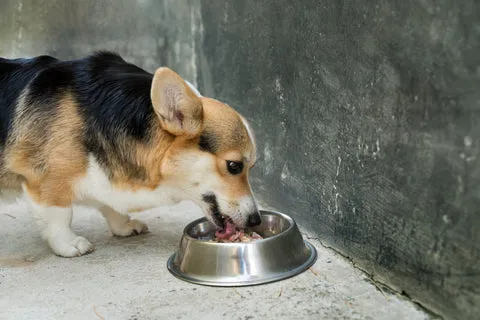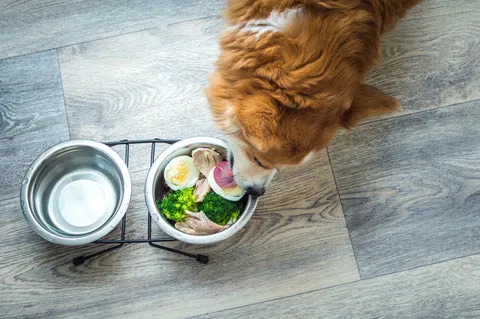It’s distressing when your canine companion isn’t feeling their best. Just like us, dogs can lose their appetite when they’re sick, making it difficult to ensure they get the nutrients they need to recover. Knowing what to feed a sick dog is crucial for supporting their recovery and easing their discomfort. This guide provides a comprehensive overview of the best food choices for dogs with upset stomachs, allergies, and sensitivities.
What to Feed a Sick Dog: Gentle, Nutritious Options
When your dog is under the weather, a bland and easily digestible diet is usually the best approach. Here are ten of the top food options to soothe a sick dog’s stomach:
1. Boiled White Meat (Chicken or Turkey)
 Chihuahua
Chihuahua
Lean protein sources like plain boiled chicken or turkey are gentle on the digestive system. The key is to remove the skin and bones before feeding, as these can be difficult to digest and pose a choking hazard.
Preparation:
- Rinse the meat thoroughly.
- Remove all skin, fat, and bones.
- Boil in water until cooked through (15-20 minutes).
- Drain the water and cut into small, manageable pieces.
- Allow to cool completely before serving.
2. White Rice
White rice, while less nutritious than brown rice, is incredibly easy to digest and can help settle an upset stomach. Its blandness makes it a safe bet for dogs experiencing digestive issues.
If your dog has diarrhea, white rice can also help to bind their stools and promote normal bowel movements. Here’s how to cook it:
- Rinse the rice under cold water.
- Combine one part rice with two parts water in a pot.
- Bring to a boil, then reduce heat and simmer for about 18 minutes, or until all water is absorbed.
- Let it rest, cool, and fluff with a fork before serving.
Remember that understanding what meat can i feed my puppy is also important for ensuring they get the right nutrition.
3. Sweet Potatoes
 Sweet potato slices on a table
Sweet potato slices on a table
Cooked sweet potatoes are packed with vitamins, fiber, and are easy on the stomach. They provide essential nutrients like calcium, iron, and magnesium, which can aid in recovery. Never feed your dog raw sweet potatoes, as they can be difficult to digest.
Preparation:
- Peel the sweet potatoes.
- Chop into chunks.
- Boil until soft.
- Drain and mash before serving.
- Allow to cool completely.
4. Pumpkin
Pumpkin is another excellent source of fiber and vitamins that can help regulate digestion and boost the immune system. It’s particularly helpful for both constipation and diarrhea.
 Husky with a pumpkin slice smile
Husky with a pumpkin slice smile
Give your dog up to four tablespoons of plain pumpkin (canned or fresh) with their meal. Ensure there are no added sugars, spices, or other ingredients that could further upset their stomach.
5. Homemade Bone Broth
 Puppy licks it
Puppy licks it
Bone broth provides essential nutrients and minerals like sodium and potassium while also helping to keep your dog hydrated. It’s gentle on the stomach and easy to digest. Avoid adding garlic or excessive salt, as these can irritate the digestive system.
Preparation:
- Combine beef or pork marrow bones and chicken or turkey bones in a large pot.
- Cover with water.
- Cook on low heat for 20-24 hours.
- Strain to remove bones and serve the liquid.
6. Baby Food (Meat-Based)
Stage 2 meat-based baby foods (chicken, lamb, turkey) can be a good option for puppies or dogs struggling to keep food down. However, carefully check the ingredient list to avoid anything toxic to dogs, such as garlic or onion powder. Baby food is easily digestible and can help soothe the stomach.
7. Fish
Fish is an excellent source of healthy fats and vitamins, which can support your dog’s immune system and overall health. Its strong smell can also encourage a sick dog to eat.
The best way to prepare fish is by poaching it. Boil it in water until cooked and remember to remove all bones and cut the fish into small pieces before serving it to your dog. Also, keep in mind what meat should you not feed dogs.
 Corgi eats from its bowl
Corgi eats from its bowl
8. Oatmeal
Plain, cooked oatmeal can help soothe an upset stomach. It’s high in fiber, which can aid constipation, and contains antioxidants that may reduce stomach inflammation. However, feed oatmeal sparingly, as too much fiber can worsen digestive issues.
 A bowl of oatmeal on a wooden tabel
A bowl of oatmeal on a wooden tabel
9. Yogurt
Plain, unsweetened yogurt with live and active cultures (probiotics) can aid digestion and support gut health. Probiotics help regulate the digestive system. Be sure to choose a yogurt without artificial sweeteners or added flavors.
 Puppy with yoghurt in its beard
Puppy with yoghurt in its beard
10. Eggs
 Dog eats eggs and vegetables from its bowl
Dog eats eggs and vegetables from its bowl
Eggs are gentle on the stomach and provide a good source of protein and energy. Scramble them without butter or oil, or boil them. Avoid eggs altogether if your dog is vomiting.
Furthermore, it’s important to be aware of what can pregnant dogs not eat to ensure their health and safety.
What to Feed a Dog With Allergies
If your dog frequently experiences upset stomachs or other digestive issues, they may have food allergies or sensitivities. Consulting with your veterinarian is crucial to determine the specific allergens. Here are some alternative food options for dogs with allergies:
Cold Pressed Dog Food
Cold pressed dog food is a great alternative to traditional kibble, especially for dogs with food sensitivities. This type of dry food undergoes minimal processing at lower temperatures, preserving more nutrients. This process makes it easier to digest and gentler on sensitive stomachs. The food breaks down more easily, at the same rate as raw food, making it suitable to be fed along with a raw diet.
Available in various flavors like white fish, salmon, and chicken, cold pressed dog food is a good choice for dogs with sensitive tummies. Look for grain-free options for dogs with grain allergies.

Insect Protein Cold Pressed Dog Food
Insect protein cold pressed dog food is a complete and nutritionally balanced alternative for dogs with meat sensitivities or allergies. Insects are a hypoallergenic protein source and are low in purines.
 Collie dog with Wilsons Insect Protein Food
Collie dog with Wilsons Insect Protein Food
Insects contain more protein than chicken or beef, so you don’t have to worry that your dog will be missing out on any of its essential nutrients.
Raw Frozen Dog Food
Raw food can be a great way to change your dog’s diet if they are fussy or sensitive to their current kibble. This food is made from natural ingredients that are minimally processed and grain-free, aiding digestion and helping to improve the coat, skin and all-around health.
 Dougal eating raw and cold pressed food
Dougal eating raw and cold pressed food
There are mixes of meat, offal and bone, and mixes with added vitamins and minerals, to give you the option of mixing with your own vegetables and minerals to cater to your dog’s specific allergies.
Key Takeaways
Knowing what to feed a sick dog or one with allergies is essential for their well-being. When your dog is sick, focus on bland, easily digestible foods. For dogs with allergies, explore alternative protein sources and minimally processed diets. Always consult with your veterinarian for personalized recommendations and to rule out any underlying health conditions. By providing the right nutrition, you can help your furry friend recover quickly and live a happy, healthy life.
